New York City in the early 1900s was a bustling metropolis, but it had a big problem: traffic. Fifth Avenue, one of the city’s main streets, was often a mess of cars, horses, streetcars, and people. It could take almost an hour just to travel a short distance. This wasn’t just annoying; it was bad for business, especially for the fancy stores along the avenue.
Enter Dr. John A. Harriss, a rich doctor who also happened to be New York’s traffic commissioner. In 1920, he came up with an idea to fix the traffic problem. His solution was simple but effective: traffic signals. These first signals were basic wooden sheds with light bulbs, set up on steel frames. They weren’t pretty, but they worked. Traffic started moving more smoothly almost right away.
The First Traffic Towers
On February 16, 1920, Dr. Harriss introduced the first traffic towers on Fifth Avenue. He paid for them himself, showing how much he cared about fixing the city’s traffic problems. These towers were small sheds raised 12 feet above the street. Each one had a traffic officer inside who controlled red, yellow, and green signals by hand. Other officers along Fifth Avenue would watch these signals to know when to let traffic move.
The wooden sheds were just the beginning. On May 16, 1921, the city approved a plan to replace them with something much fancier. The Fifth Avenue Association, a group of businesses along the street, offered to give the city seven new traffic towers. These would be placed at key intersections: 14th, 26th, 34th, 38th, 42nd, 50th, and 57th Streets.
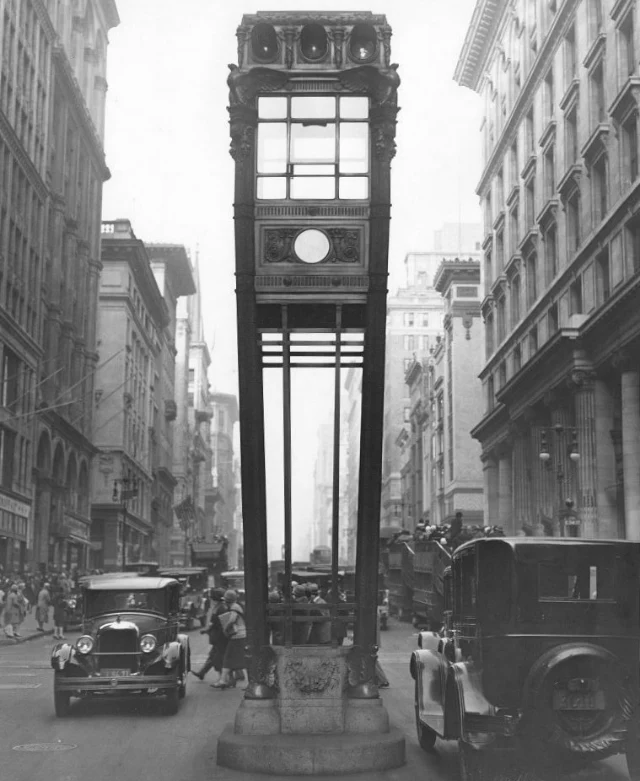
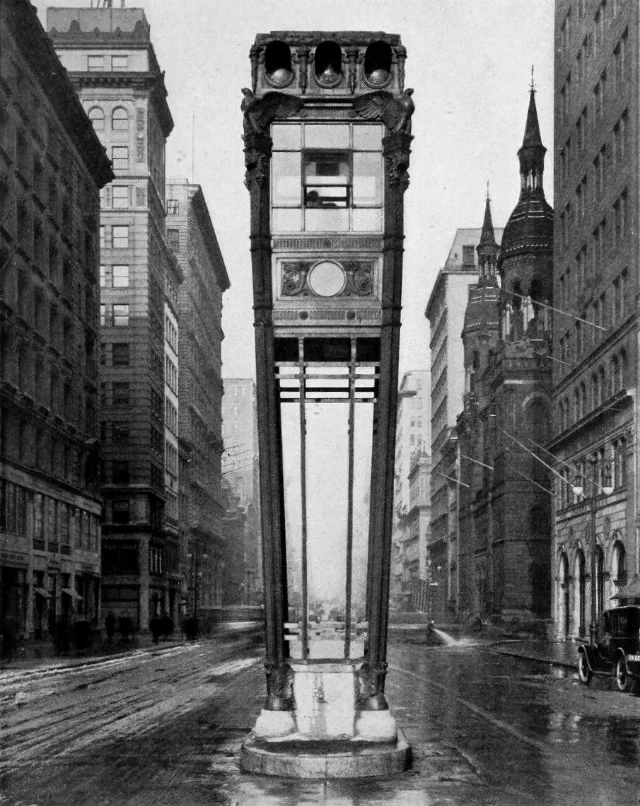
Joseph H. Freedlander designed these new towers, and they were made by the John A. Polachek Bronze and Iron Company in Long Island City. Each tower was impressive: about 24 feet tall, weighing five tons, and made of solid bronze on a strong steel frame. They weren’t just traffic signals; they were works of art.
These bronze towers had some cool features. They had clocks on their north and south sides, all synchronized so they showed the same time. They also had big bronze bells weighing 350 pounds each. These bells would ring on the hour, adding a touch of grandeur to their practical purpose.
The Grand Opening
On December 14, 1922, at 2 pm, the first of these new bronze towers started working. It was at the corner of Fifth Avenue and 42nd Street, right in the heart of the city. There was a big celebration to mark the occasion. Over the next few days, the rest of the towers were turned on one by one.
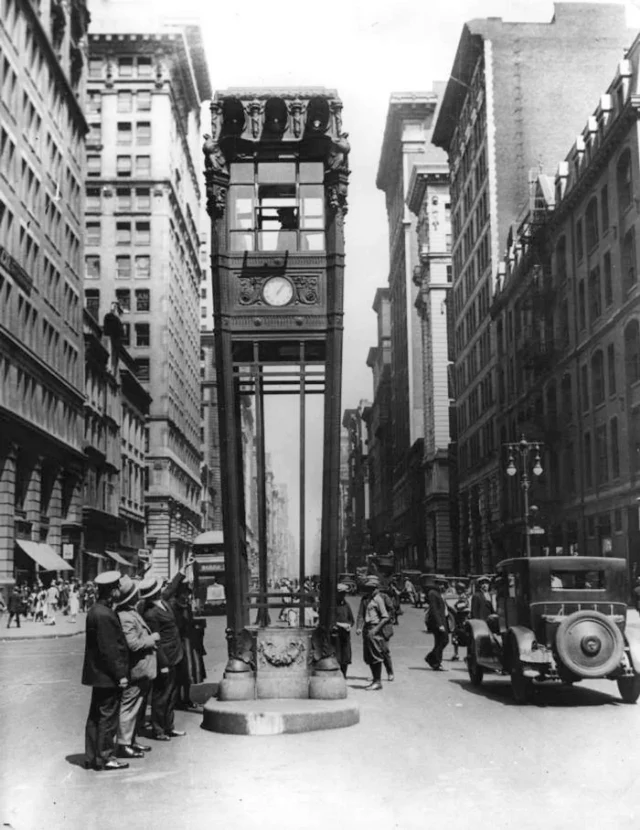
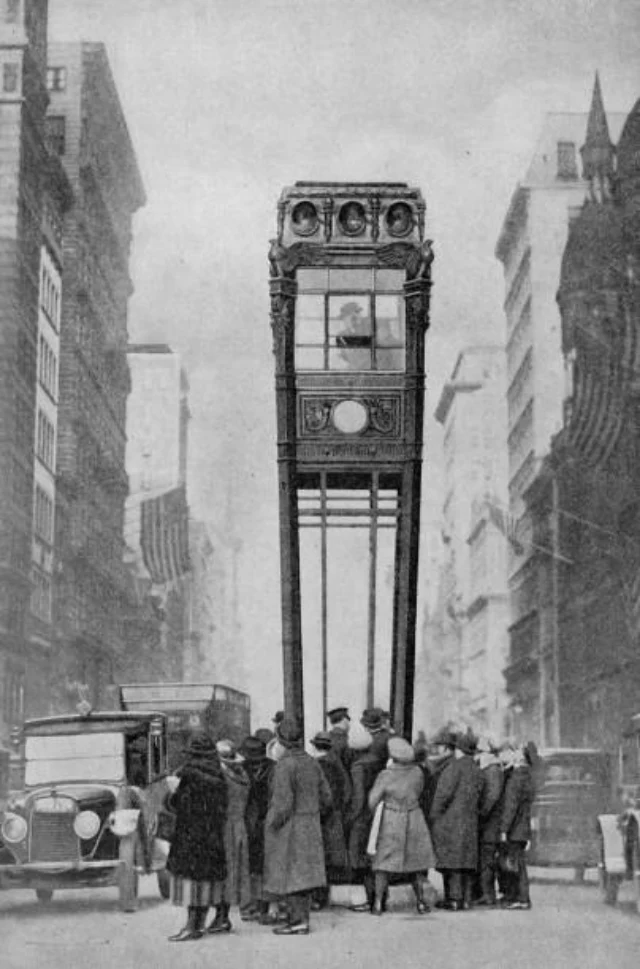
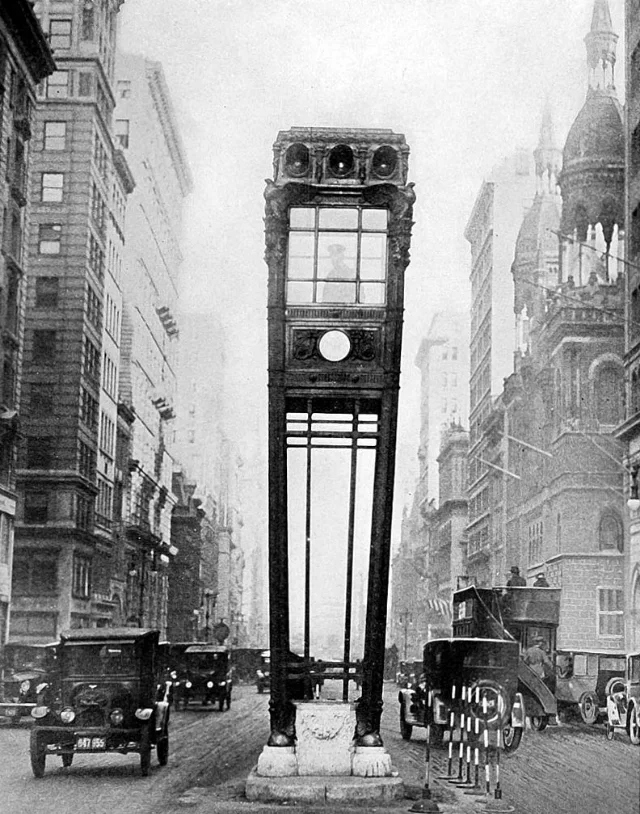
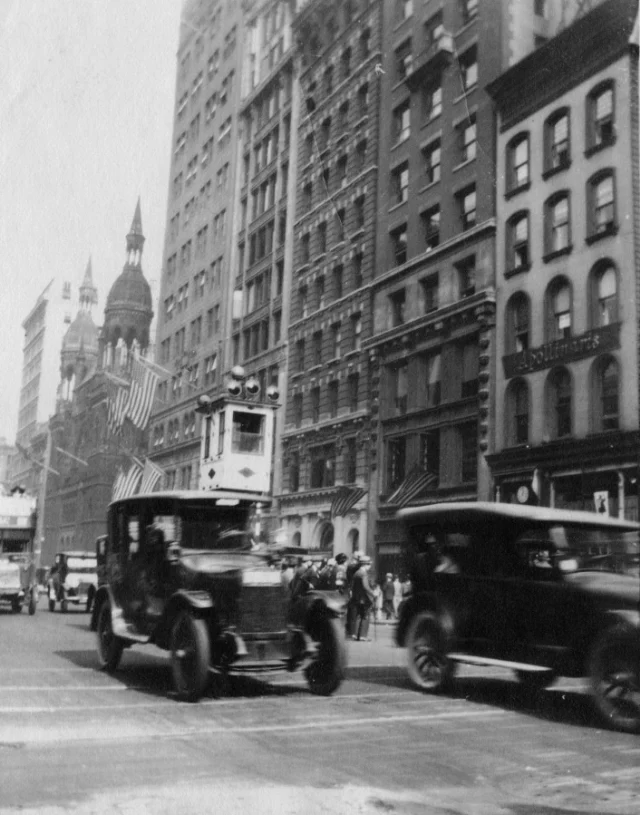
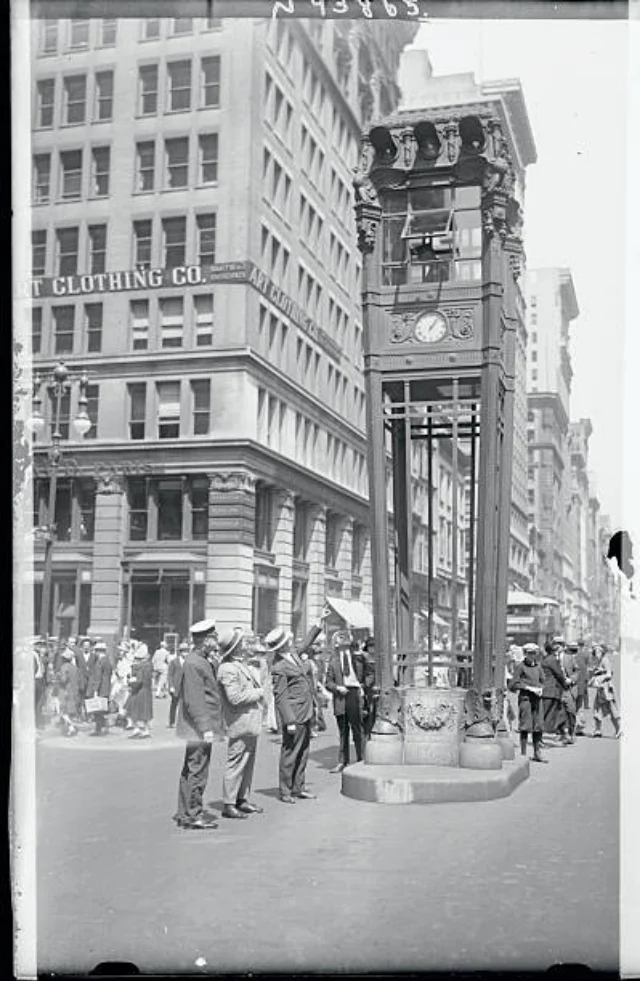
The towers quickly became a familiar sight on Fifth Avenue. They stood tall and proud, guiding traffic and adding to the street’s elegant look. For New Yorkers and visitors alike, these bronze sentinels became landmarks, as recognizable as the grand buildings around them.
How the Towers Worked
Inside each tower was a small room where a police officer sat. This officer had a great view of the intersection below and could control the traffic signals. The signals were simple: red for “stop” and green for “go.” At first, there was also a yellow light, but this changed later.
The officer would switch the lights based on how much traffic there was in each direction. This human touch meant that the flow of traffic could be adjusted in real-time, depending on what was happening on the street.
On April 27, 1925, the city made a big change to how the traffic signals worked. They got rid of the yellow light. From that day on, there were only two colors: red for “stop” and green for “go.” This made things simpler and clearer for drivers and pedestrians.
This change set the standard for traffic lights not just in New York, but around the world. The red-green system became the norm, and it’s still what we use today.
The bronze towers made a huge difference to life on Fifth Avenue. Traffic started moving more smoothly and predictably. This was great news for the stores along the street. Customers could now reach them more easily, which was good for business.
The towers also made the street safer. With clear signals telling people when to stop and go, there were fewer accidents. Pedestrians, horses, streetcars, and cars could all share the road more safely.
The success of the Fifth Avenue towers didn’t go unnoticed. Other parts of New York City, and even other cities around the country, started to look at how they could use similar systems to manage their traffic.
While not every city could afford fancy bronze towers, the basic idea of using lights to control traffic spread far and wide. The concept that started on Fifth Avenue helped shape how cities around the world manage their streets.



GIPHY App Key not set. Please check settings